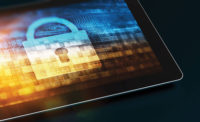The Insider Threat: Protecting Your Company from Itself

Imagine losing your car keys. It would be inconvenient, as you could be stranded for a while and you would need to find and obtain a replacement key.
Now imagine losing a set of work keys. How much disruption could this cause your company?
Remember the 2014 Sony breach? It was perpetrated by a group who claimed that they were able to access the movie studio's computer systems because Sony failed to lock their physical doors. The group then stole and leaked data including personal information on employees, information regarding salaries, copies of unreleased films, intra-office emails and other confidential information. They also released demands regarding an upcoming film that resulted in the film’s planned theatrical release being temporarily cancelled. Sony spent $15 million to deal with the damages.
As we saw with the Sony breach, often the simplest way for hackers to access your corporate network is through a physical device that already has access, or through an on-site device. A hacker can break (or simply walk) into your facility and plug into an unprotected ethernet port, or steal a company laptop or server, to access your network and any unprotected data without having to hack through most of the cybersecurity in place on your network.
Cyber breaches aren’t limited to outside actors, though. Increasingly, insider threats come from internal employees. Anthem was most recently hit with an insider theft that resulted in personal data being stolen for more than 18,000 Medicare members. Anthem’s Medicare insurance coordination services vendor learned in April 2017 about an employee that had been stealing and misusing Medicaid member data since as early as July 2016.
The employee at fault had emailed a file containing Medicare ID numbers, Social Security numbers, Health Plan ID numbers, names of members and dates of enrollment regarding Anthem members to his own personal email address.
Protecting your enterprise from hackers, unauthorized access by employees or insider threats demands constant attention, proactive thinking and implementation of today’s best technology. For many enterprises, the answer lies in multiple layers and types of safeguards, including video surveillance, ID management, access control systems and more. One very effective safeguard and security technology includes controlling access to physical keys.
Key management systems are the most effective way to control who has physical keys, when they have them, how long they are used and when they are returned. Keys can be housed in key control cabinets that are available in a variety of configurations, including size, level of security, capacity, interface and more.
For example, a basic application would entail enrollment of individuals based on their function and the access that you want them to have to secure areas. An operations center engineer can be authorized for 24/7 key access, whereas a technician may be restricted to accessing a particular key at certain times and for specific amounts of time
To access a stored key or badge, the authorized user will simply enter their PIN code on the keypad and when the system verifies the user, the door will open and the location of the requested key will light up. Key control systems can also be configured with card readers or biometric readers and can be networked for centralized control. At any time, security operations can view the status of any key in the system; quickly locate any key in the system; determine who currently has which keys out and for what area and when they are scheduled to be returned; or determine who has had keys out, for what areas and when. Keys can be returned to any cabinet in the system, but if a key is not returned when scheduled, e-mail alerts and text messages can be sent to selected individuals to enable quick action.
The versatility of the key control systems also lends itself to more complex applications. For instance, a general access badge would allow an employee entrance to a building and a second badge would be used to access internal areas of the facility. To maintain tight security, the internal access badge would be secured in a key cabinet when not in use by the authorized employee.
Key control can help you limit access to any part of your enterprise, all while providing detailed logs and reports for management to review, should an incident occur. Advanced control systems can even integrate with your existing access control system to correlate data and provide further insights.
Defending your operations and reputation requires a holistic cybersecurity plan, and physical security has become an increasingly important factor in protecting your network and data. Today’s key control systems are the most effective way for you to control access to sensitive and highly secure areas of your enterprise and prevent hacks from unwanted visitors or insider threats.
Looking for a reprint of this article?
From high-res PDFs to custom plaques, order your copy today!






